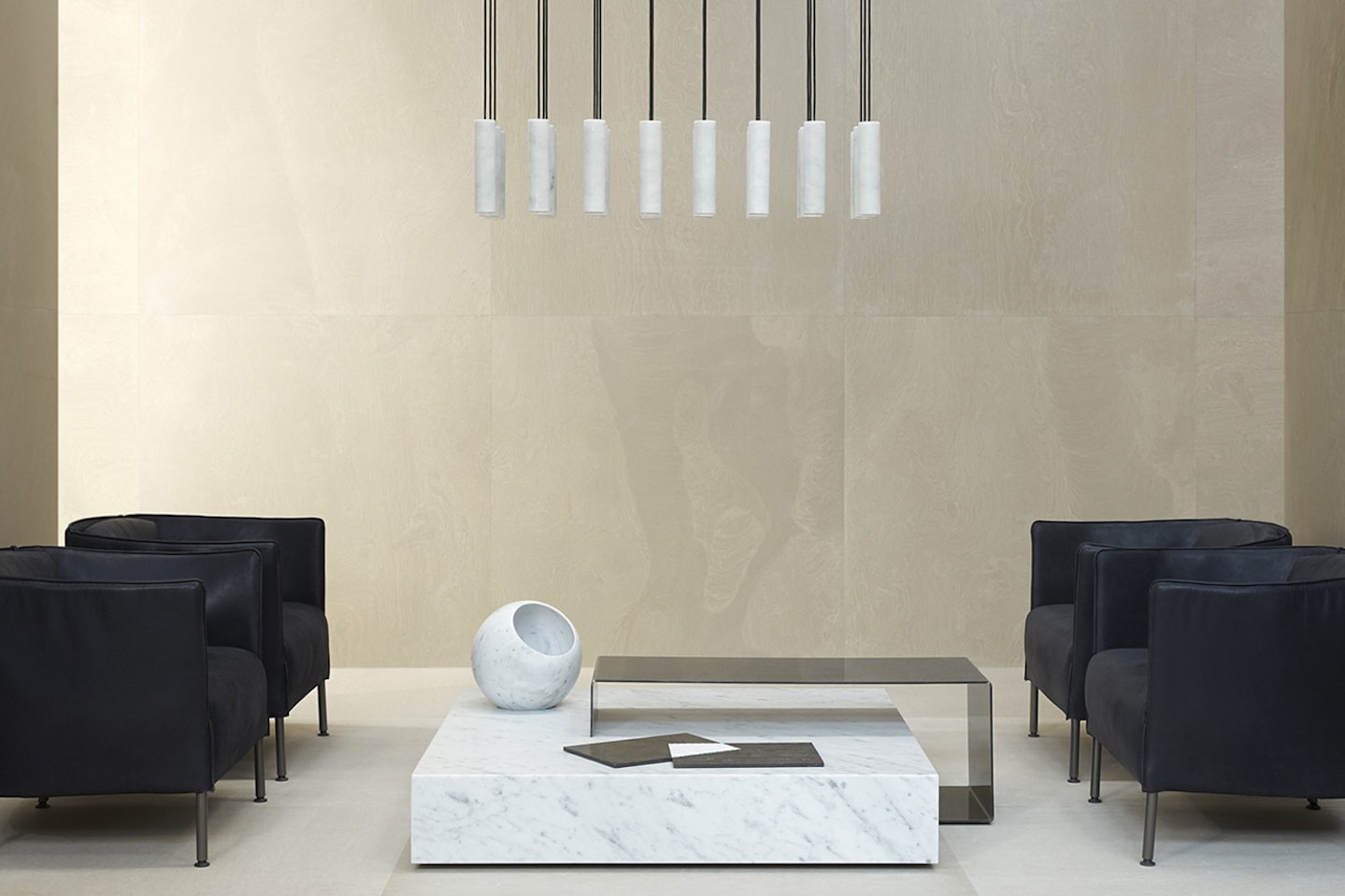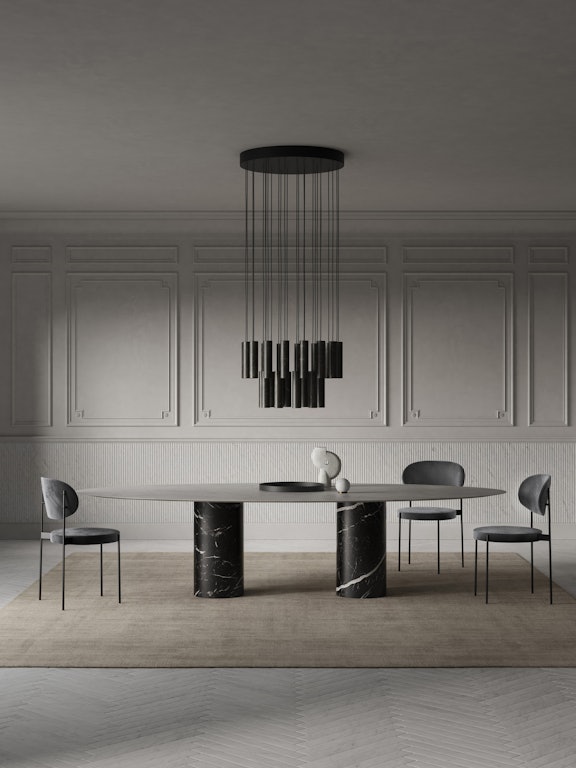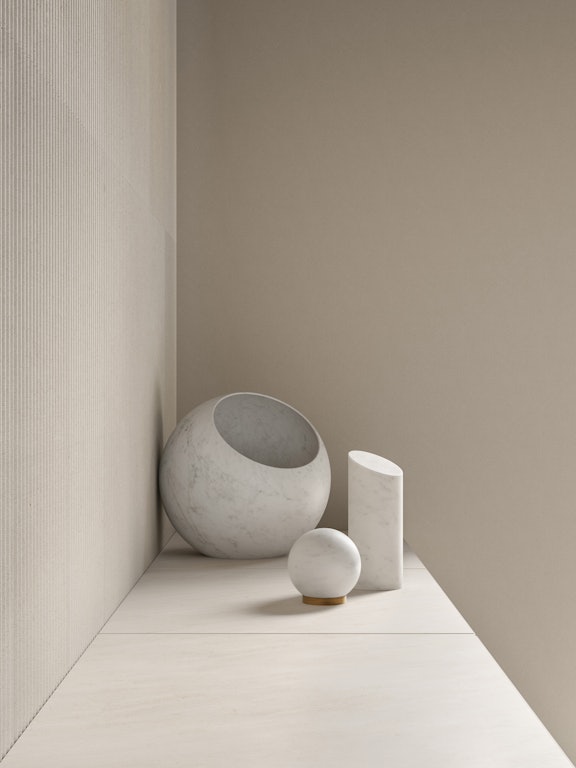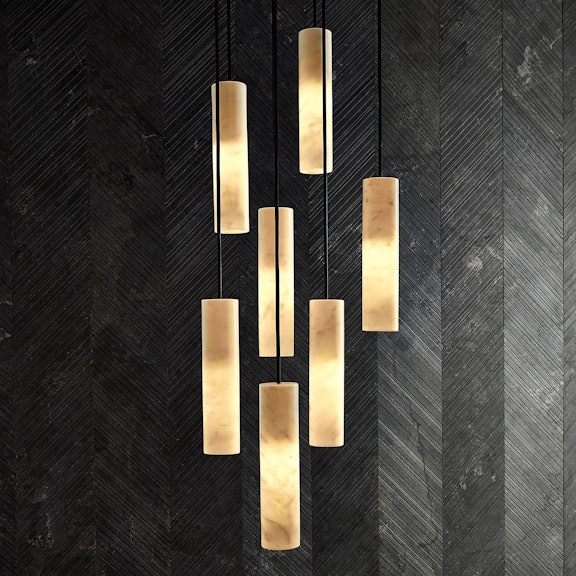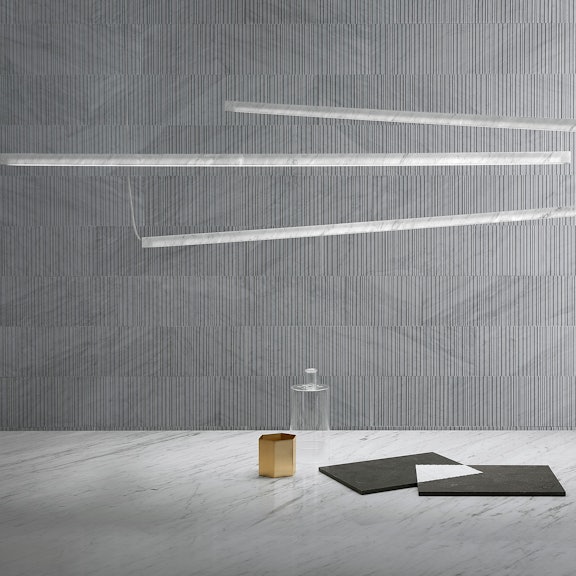How to design a great lighting plan for your home
03.2022
The right light in the right place is key to creating a user-friendly home with a welcoming atmosphere. Welcome to our guide on designing the perfect lighting plan
How to design a lighting plan for your home
Lights not only serve to provide illumination, but are also an important décor feature and accompany our daily activities, so installing them in the right places, in the right way, is fundamental. Whether we are talking about a vintage lamp strategically placed on a side table by the sofa for when you’re in the mood for reading, or a striking contemporary ceiling lamp in your kitchen, lights are a key component in determining our home’s ambience.
We take a look at the principles of great lighting to help you achieve the effect you want in your home, together with inspiring examples to show you just what a difference this “magic ingredient” can make to the look and feel of a space.
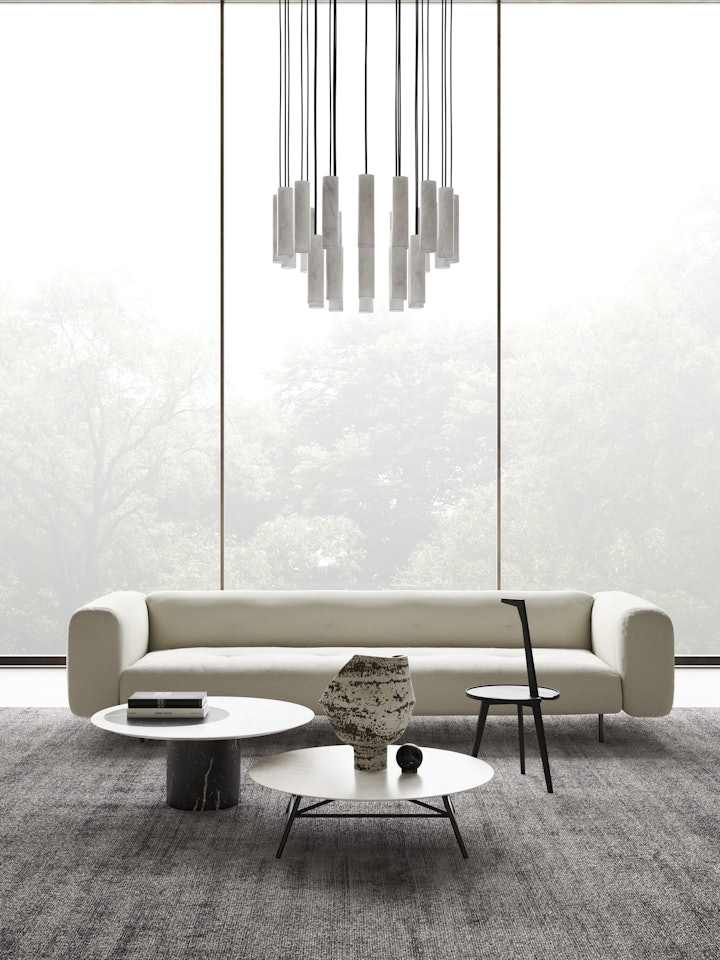
Strategic lighting
A well-lit home is a welcoming home and one which enables us to carry out our daily activities with ease, but the phrase “well-lit” doesn’t necessarily mean bright daylight no matter what time of the day it is. For example, if you are entertaining guests for dinner, you want a soft, subdued atmosphere rather than operating-theatre starkness, whereas strong lighting is needed if that same table is sometimes used for working or studying.
In short, there is no “one size fits all” rule for lighting, but instead you need to take a strategic approach to find the right balance. Ideally, you want to have flexibility and a number of light sources throughout a space so that you can adjust the lighting to fit each different situation.
This means that if you are building or renovating, you need to think about lighting early on in the process so that your electrician can install wiring and switches in the right places.
The best solution is for each light to be installed as a single unit so that you have maximum flexibility and can turn on just the one you want, rather than them all being interconnected. As an aside, this can have a small, but useful, impact on your electricity bill. The other aspect to take into consideration when planning your lighting design is the natural light in each space, ensuring that no corners are left in darkness, unless, of course, you want to create a particular atmosphere.
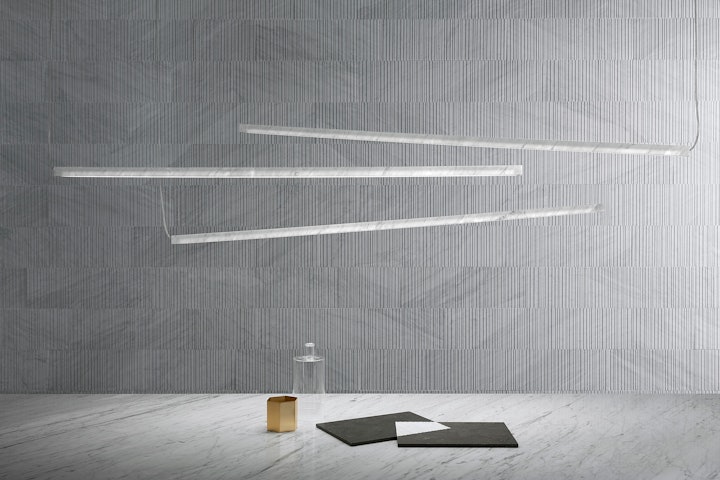
What does a lighting plan entail?
When you design a lighting plan, you not only need to think about the position of the fitting or light source, but all the components required to make it work, including sockets and circuits, so that you do not end up having to use extension cords that are dangerous and unsightly. It also includes thinking about the type of light, for example if it will be wall-mounted, a table lamp or ceiling light, and the direction it will point in.
Another thing to consider is the placement of furniture, and then of course, there is the role of the lighting. Will it be ambient, task or accent? The objective is to ensure every corner can be lit when necessary, but also to avoid overkill, so that you find that perfect balance between form and function.
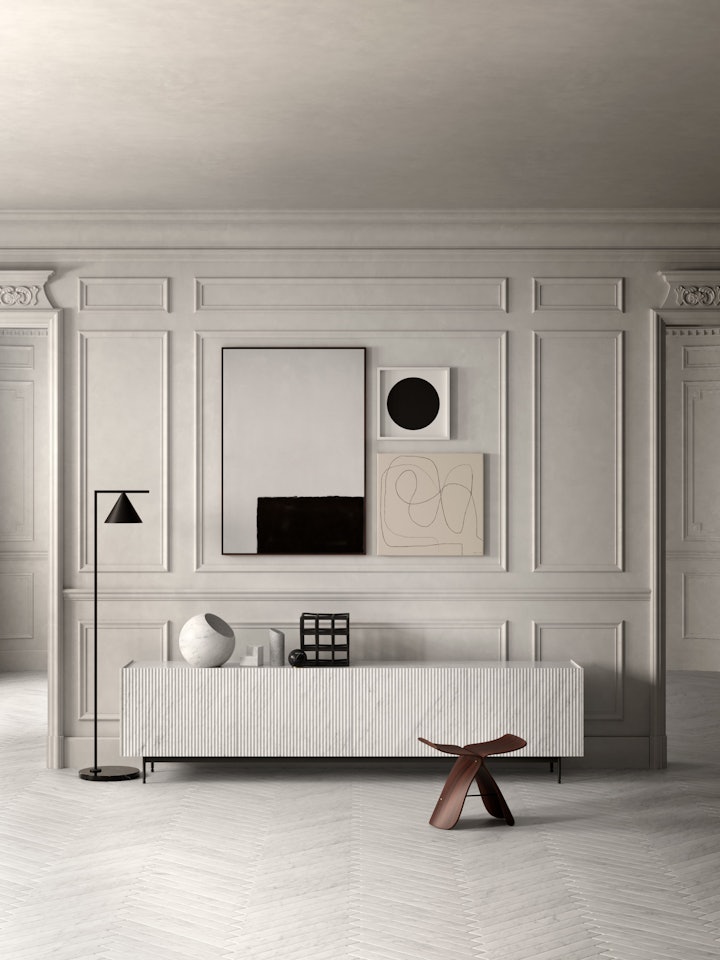
How to distribute light in a space
When it comes to designing your lighting plan, there are some givens. Clearly, the kitchen worktop needs to be well-lit, and the same rule applies to the bathroom mirror area. Mood lighting is all very well, but you need to be able to see what you are doing when you are shaving, apply make-up or chopping vegetables.
That said, once these two zones are dealt with, it then comes down to the layout of the house, position of your furniture and, of course, personal taste.
The first step when planning your lighting is to think about the characteristics of each room, including how they are used, specifically:
- The size of the room. As a rule of thumb, if you use LED bulbs, you need around 4W per square metre of floor space
- Ceiling height
- Natural light
For the more lived-in zones of the house, a layered light solution is called for, so that you can adjust it depending on the time of the day or what you are doing at any given time. Start from the top, and here you could opt for spotlights, ceiling or pendant lights.
From here, you can add mood or atmosphere by using wall or floor lights, and then the finishing touches with table lamps to provide a more intense light in strategic zones.
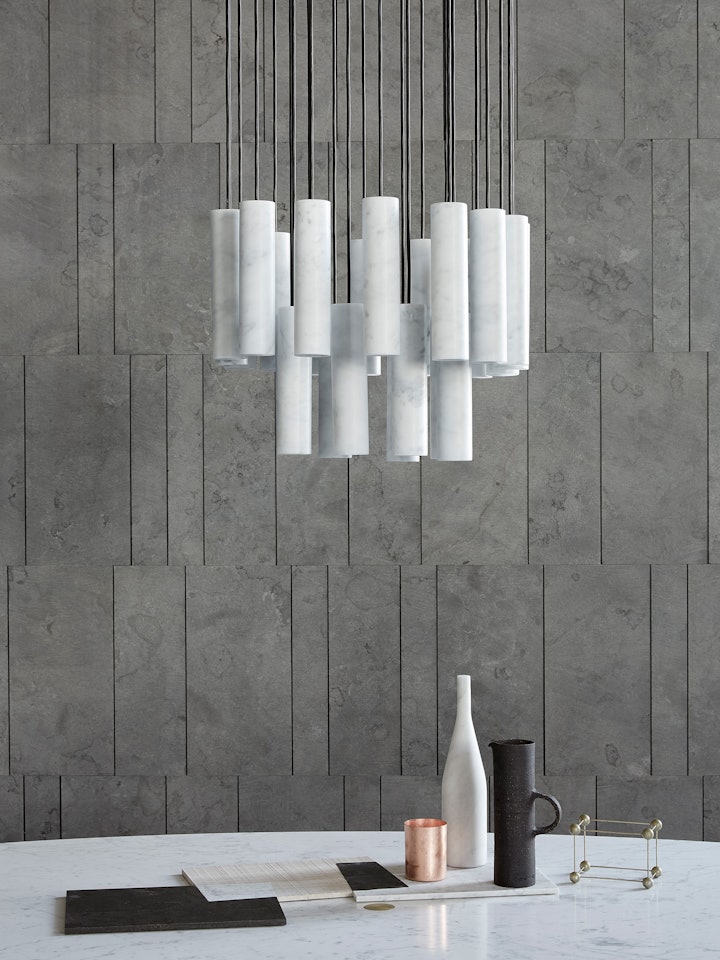
The magic and variety of a pendant lamp
Pendant lights are a crucial interior design element. Apart from their practical function, they play an important part in determining the style of a room. They are your chance to make an impact, especially if you choose a showstopper such as our Silo chandelier, which is an elegant, natural stone take on a more traditional ornate fitting. Made of 26 cylinders carved from white Bianco Carrara marble or darkest brown Pietra d’Avola limestone, it makes an impact without being ostentatious or showy.
Whether you choose this or a single pendant light solution, because this type of fitting emits a contained amount of light, it needs to be placed strategically, either above a table or in the exact centre of the room. In terms of distance from the ceiling, it should be positioned at around 2 metres from the floor or, if it will be over a table, it should hang approximately 90 cm above.
With the current trend of having a series of sources of light in any given space, pendant lamps are ideal as they can be scattered around to achieve the effect you are looking for. For example, you might place three in a row above a kitchen island, a cluster in the reading nook of your living room, or dotted at regular intervals down the hallway.
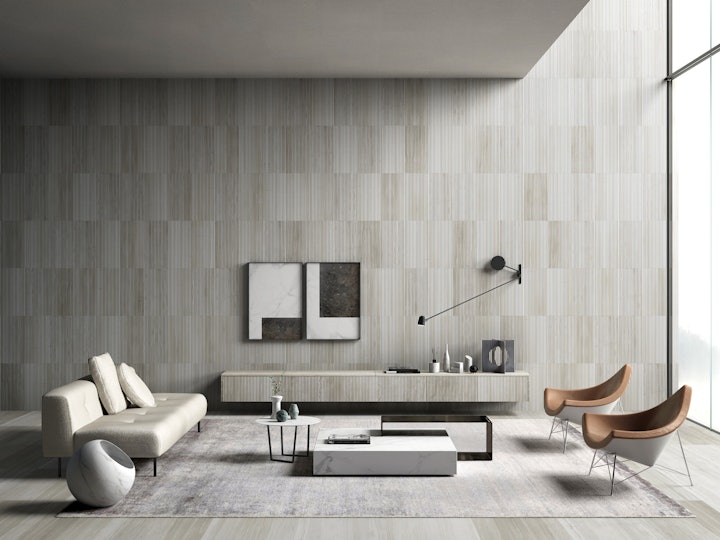
Create atmosphere with floor lamps
Floor lamps are another interesting solution as they are perfect for illuminating dark corners and often also fulfil another function which is to add interest to a part of the room that would otherwise feel empty. They are a lighting designer’s great friend because they often feature a dimmer, meaning they can illuminate an entire room or just a contained area.
Floor lamps should always make up part of your lighting plan, because they are so versatile and can highlight particular décor features, from textures to accessories to pictures. You can choose from a tall, standing version or a piece that remains low to the floor, such as our Urano, a 50-cm sphere carved from Bianco Carrara marble. Resembling a celestial body, it casts a gorgeous soft glow and is perfect for placing near stairs, a reading nook or a corner of the living room where it doubles up as a stunning decorative piece.
While there is no set quota for the amount or type of lights you should use in your home, we hope these simple guidelines help you think about what works for your home and your lifestyle.
The main thing to remember is that a modular approach will always be the most effective as it gives you the flexibility to adjust your lighting for every occasion.
Lighting is an important, fascinating topic and we explore different aspects in more depth elsewhere on our site, including living room illumination and tips for great bathroom lighting.
If you have any questions about how to bring your home to life through the magic of lighting or would like to request a free design consultation with one of our experts, please get in touch. We will be delighted to help!
